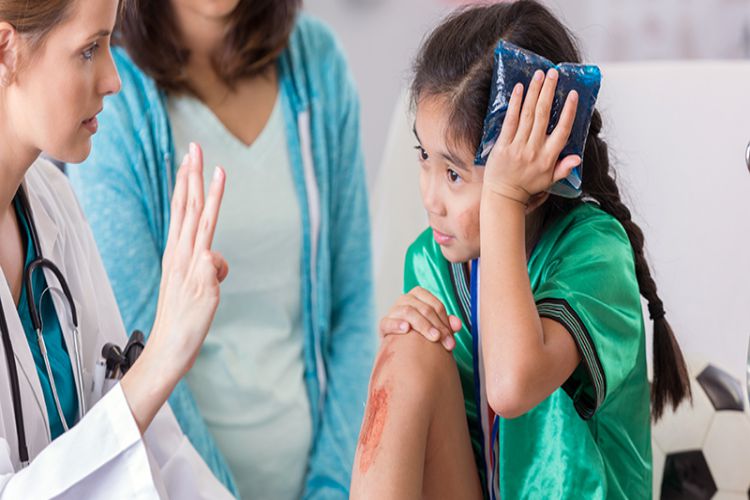
Closed head injuries represent a serious and often underestimated threat to health, manifesting when a sudden force to the head causes brain damage without breaking the skull. These injuries can vary widely in severity, from minor concussions that may seem inconsequential at the moment to severe brain traumas with long-lasting effects on cognitive, physical, and emotional health. The invisibility of these injuries often belies their potential for significant impact, making the immediate response to such incidents crucial for the affected individual’s recovery and quality of life.
The urgency of recognizing and addressing closed head injuries promptly cannot be overstated. Early symptoms, including confusion, headaches, dizziness, and even brief losses of consciousness, necessitate immediate medical evaluation and care. Timely medical intervention not only stabilizes the patient but also lays the groundwork for a more favorable recovery trajectory. This underscores the vital role that quick action and informed decision-making play in the aftermath of head trauma, highlighting the need for awareness and preparedness in such emergencies.
The Critical First Steps
Following a closed head injury, the immediacy of medical care cannot be emphasized enough. Early recognition of symptoms like confusion, loss of consciousness, severe headaches, and nausea is critical. These signs necessitate swift action, calling for emergency medical services that are equipped to quickly assess and stabilize the patient. Such initial steps are crucial in preventing further brain injury and setting the stage for a potentially smoother recovery process.
The prompt response by emergency teams plays a decisive role in mitigating the long-term impact of closed head injuries. Their training allows them to implement lifesaving interventions, significantly lowering the risk of severe complications. This early intervention underscores the critical nature of recognizing the urgency of medical care in the aftereffects of head trauma, ensuring the best possible outcomes for those affected.
Diagnostic and Treatment Advances
Rapid advancements in medical diagnostics and treatment have significantly enhanced the management of closed-head injuries, ensuring more precise and effective care for those affected. Modern imaging technologies, such as CT scans and MRIs, have become indispensable tools, offering detailed insights into the brain’s condition after trauma. These imaging techniques enable healthcare professionals to identify specific areas of damage accurately and tailor treatment plans to address individual needs effectively.
The introduction of early intervention strategies marks a critical development in treating these injuries. Medications to reduce brain swelling and surgical procedures to relieve intracranial pressure are now standard responses that can dramatically improve a patient’s prognosis. Such timely medical interventions underscore the critical importance of immediate healthcare following any head trauma, paving the way for better recovery outcomes and minimizing the long-term impact of brain injuries.
The Role of Legal Advocacy
Following a closed head injury, the importance of legal support becomes paramount, especially when confronting the complexities of obtaining necessary medical care, managing rehabilitation, and securing compensation for injuries due to someone else’s negligence. Victims and their families are strongly advised to contact a St. Louis brain Injury attorney for professional guidance. An experienced attorney from this specialized field can offer invaluable legal advice and support, ensuring that the victim receives the comprehensive care and compensation essential for their recovery journey.
The involvement of a knowledgeable attorney ensures that the injured party’s rights are protected and that they are adequately compensated for their ordeal. This legal assistance is critical in alleviating the burden on victims, allowing them to concentrate on their rehabilitation with the confidence that their legal and financial concerns are being addressed. Engaging with a seasoned brain injury attorney can make a significant difference in the outcome of their recovery process, providing peace of mind during a challenging time.
Rehabilitation: A Key to Recovery
Rehabilitation is pivotal in the journey towards recovery for those suffering from closed head injuries. It encompasses a variety of tailored programs, such as physical therapy, occupational therapy, speech therapy, and cognitive rehabilitation, aimed at helping individuals regain their lost abilities and adjust to new life circumstances. These personalized rehabilitation efforts are crucial for assisting patients in reclaiming as much of their normal life as possible, addressing the distinct challenges and needs that arise from their injuries.
The success of these rehabilitation programs relies heavily on the collaborative efforts of a multidisciplinary team. This team’s comprehensive support guarantees that the set rehabilitation objectives are achieved, ensuring a more seamless reintegration into everyday life and professional environments. Through such dedicated and specialized care, individuals are better equipped to handle the complexities of their recovery, marking rehabilitation as a fundamental component of their healing process.
The Importance of Community and Support Networks
Recovery from a closed head injury is greatly influenced by the strength of one’s support network. Collaboration and encouragement from various sources of support play an integral role in navigating the challenges of recovery. Here’s how community and support networks contribute to the healing journey:
- Family and Friends: Offer emotional support and practical help, serving as the primary network for encouragement and daily assistance.
- Specialized Support Groups: Provide a platform for sharing experiences and coping strategies, helping individuals feel understood and less isolated.
- Community Resources: Deliver crucial information and access to services designed to assist in the recovery process.
- Advocacy Groups: Work to raise public awareness about the prevalence and impact of head injuries, advocate for safety measures, and lobby for legislative changes aimed at preventing future injuries.
These components of support and advocacy are foundational in creating a supportive environment that facilitates recovery and promotes a safer future for everyone.
Prevention and Education: Keys to Reducing Incidence
Preventive measures and educational initiatives stand as the cornerstone in the battle against the incidence and severity of closed-head injuries. Through widespread public education campaigns and targeted safety programs, individuals are made aware of the potential dangers associated with head injuries and the critical importance of adopting protective practices. Emphasizing the use of helmets during cycling, contact sports, and other high-risk activities is a key message in these efforts.
By fostering a culture that prioritizes safety and awareness, society can significantly diminish the occurrence of such injuries. This proactive approach not only has the potential to save lives but also alleviates the extensive impact these injuries can have on individuals, their families, and the broader healthcare infrastructure. Through a collective commitment to prevention and education, the community can effect meaningful reductions in the prevalence of closed-head injuries, enhancing overall public health.




